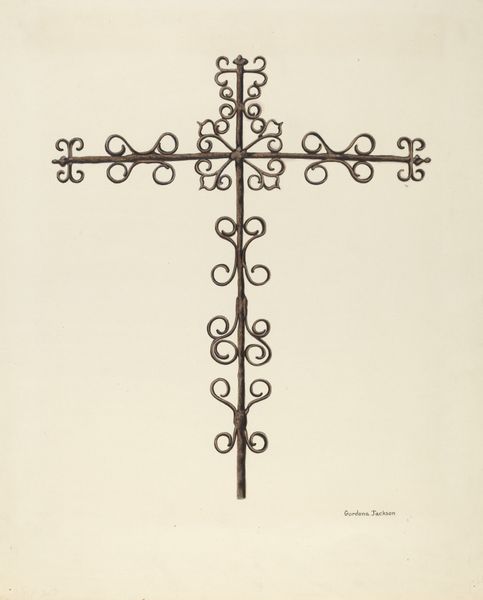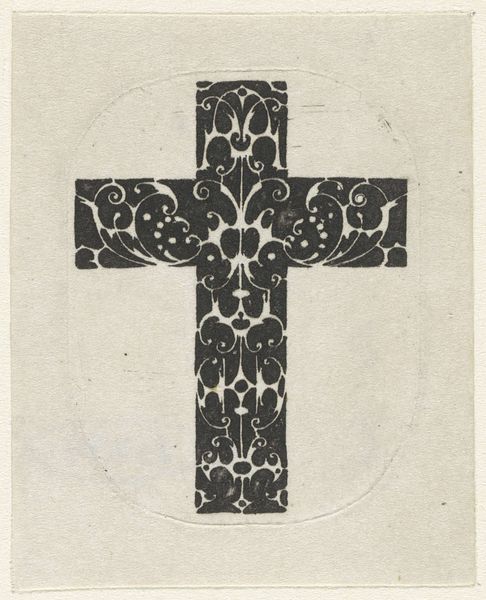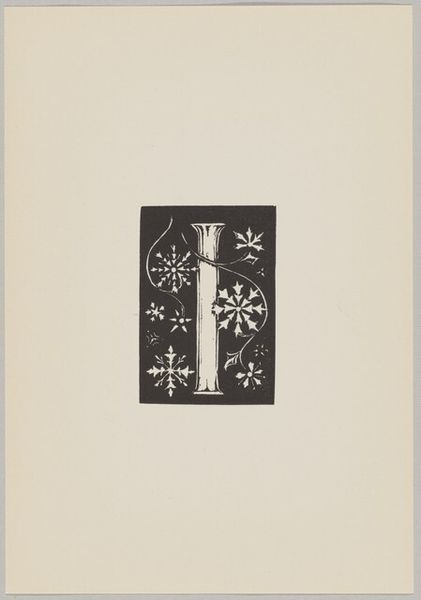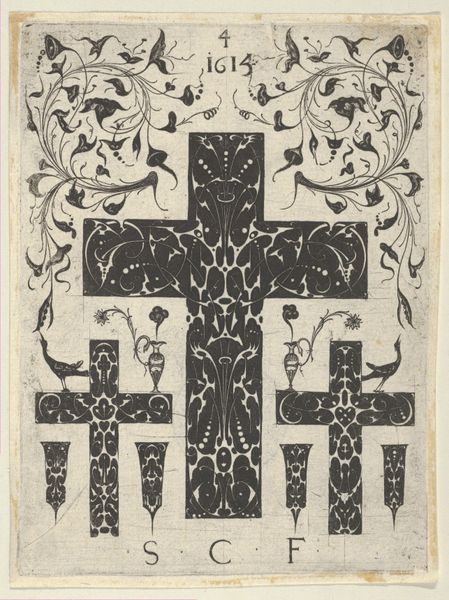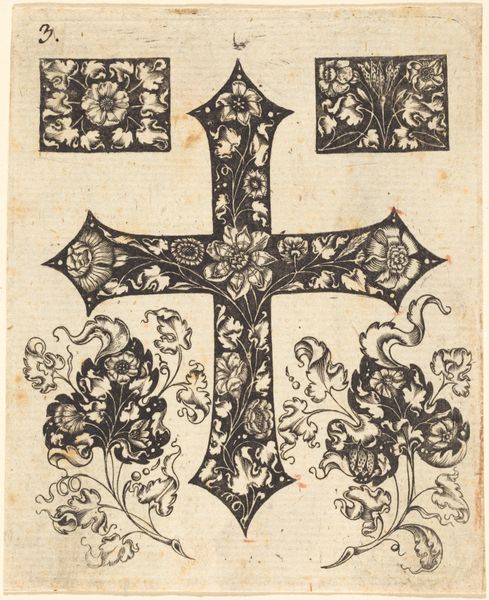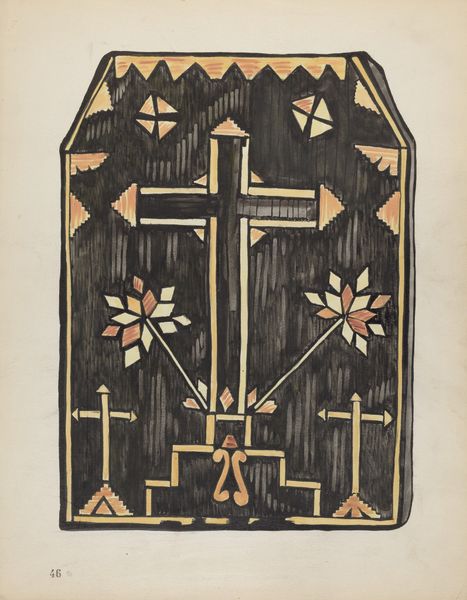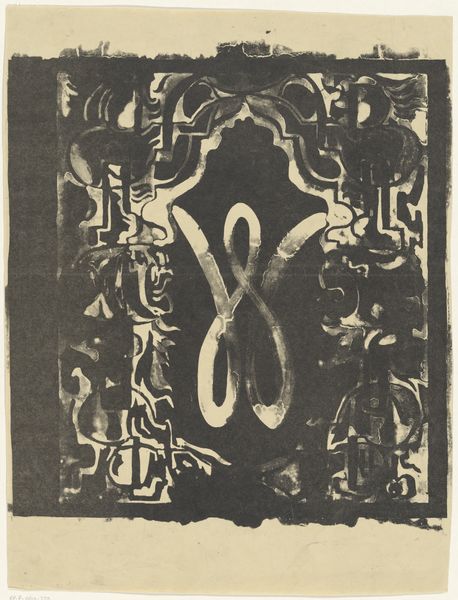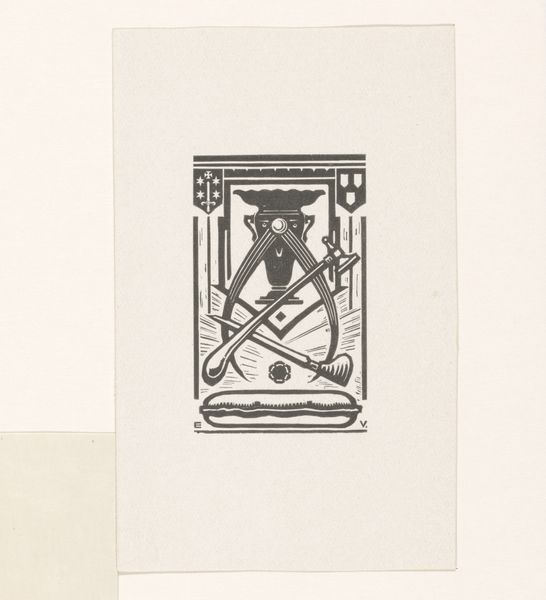
print, engraving
# print
#
geometric
#
line
#
northern-renaissance
#
engraving
Dimensions: height 120 mm, width 95 mm
Copyright: Rijks Museum: Open Domain
Curator: This artwork is called "Drie kruizen," meaning "Three Crosses," an engraving made in 1615. Editor: Intricate, isn't it? The stark contrast of the black ink against the white paper really emphasizes the decorative quality of each cross. Curator: Precisely. This engraving reflects the context of the Northern Renaissance, when there was increased demand for such art for religious and devotional use, especially in private settings. Editor: You can really see the Renaissance influence in the floral motifs winding around the crosses; they create a dense, almost claustrophobic space. How do you interpret that intensity? Curator: Given the religious themes and the context of Counter-Reformation art production at the time, it is possibly intended to draw the viewer into a more introspective contemplation, prompting more attention to spirituality and internal moral reflection. These images had to compete for attention in increasingly mediated environments of worship and personal expression. Editor: It is a dense and compelling composition with a strong vertical emphasis leading the eye up each cross. I find it hard to break out the individual pieces since all are so interconnected in what feels like both planned design and nature-inspired design. Curator: Exactly. Prints like this would circulate widely, fostering common iconographies, in a time when art had to compete to be seen and remembered, with important political implications tied to religious institutions and their role in the period. Editor: This print creates a striking tension between graphic clarity and ornamental overload, where clarity helps promote devotion as well as the institutional control of the Church during the Renaissance and afterward. Curator: So we see it wasn't just about religious art but it became about social cohesion, cultural identity, the market economy and how art serves the socio-political order of early modernity. Editor: A detailed conversation that really illuminated the intricacies behind the seeming simplicity of black and white print.
Comments
No comments
Be the first to comment and join the conversation on the ultimate creative platform.

